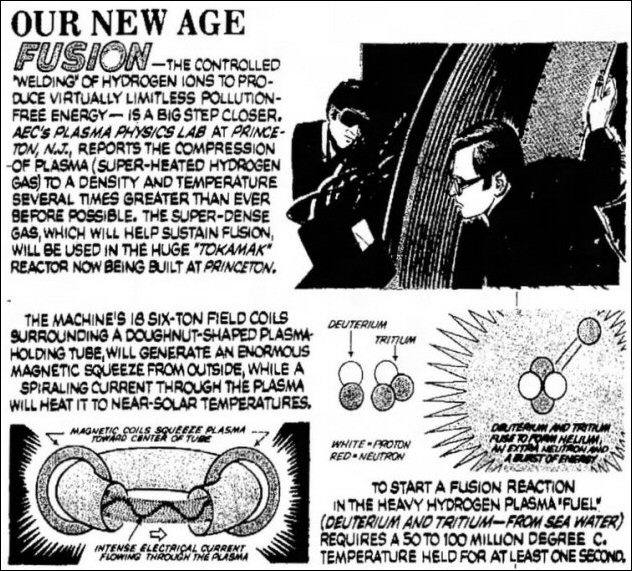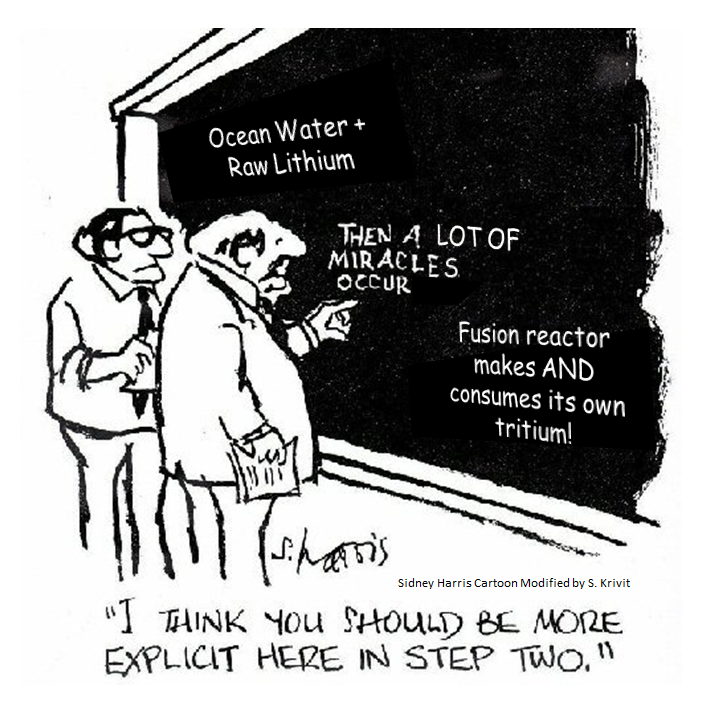The Missing Miracles of Fusion Fuel
Return to the Fusion Fuel Main Page
By Steven B. Krivit
June 21, 2022
This article is one of three parts of a multimedia New Energy Times investigation that we are publishing today about fusion fuel claims. Here is the link to the other article, “The Failure to Plan for Fusion Fuel,” and the link to the video analysis “False Foundations for Nuclear Fusion.” We have provided the scientific and historical details in earlier New Energy Times articles.
Introduction
For at least 50 years, fusion scientists have been telling the public that the fuel for nuclear fusion is “abundant, virtually inexhaustible, and equally accessible to everyone, everywhere.” They have been saying that there is enough fuel in ocean water to provide power for humanity for billions of years.
The consensus in the fusion field is that the optimal fuel mixture for nuclear fusion is a 50/50 mixture of deuterium and tritium. These are isotopes of hydrogen. Normal hydrogen won’t suffice. Deuterium alone won’t work well enough. Neither will tritium by itself.
Fusion scientists, only occasionally, disclosed to the public that tritium did not exist in nature as a fuel source. When they did disclose it, they said that sufficient quantities of enriched lithium-6, from which tritium could be made, were available. They are not.
This article summarizes the potentially deal-breaking fuel issues that preclude deuterium-tritium* thermonuclear fusion from being a practical source of energy.
A comic strip from 1975 captured the essence of this message: a virtually limitless source of energy; the required fuels, deuterium and tritium, will come from seawater.

“Our New Age” comic, by Athelstan Spilhaus and Gene Fawcett, 1975
Cartoonist Sidney Harris understood how scientists sometimes develop grand ideas but lack crucial foundations. I have modified Harris’ blackboard for the context of the fusion fuel issues. The cartoon is displayed here not for the humor but for illuminating the significance of the fusion fuel issues.

Sidney Harris cartoon modified by S. Krivit
Fusion Fuel Issues
These are the major requirements, in succession, that are needed for the fuel* for fusion energy:
- An environmentally friendly, legal method to process industrial-scale quantities of lithium enriched in the lithium-6 isotope must be invented.
- Government agreements must be developed to allow and control the production of this isotope because it is used for nuclear weapons.
- A lithium processing plant needs to be built based on the newly invented method.
- The processing plant must begin producing enriched lithium-6 while some tritium, produced now by the aging CANDU reactor fleet, is still available to start a fusion reactor with a full tritium breeding blanket.
- At least one such fusion reactor, with the demonstrated capacity to produce net energy, must be built. (If it doesn’t produce net energy, then all we have is a very expensive tritium-making machine.)
- In this reactor, TBRA needs to be equal to or greater than TBRR. That is, the theoretically achievable tritium breeding ratio must be greater than or equal to the required tritium breeding ratio.
- To achieve the required TBR, a neutron multiplier is also required. Beryllium (or less-toxic alternate material, if such exists) is needed to multiply the neutron yield from the primary fusion reactions. Without a multiplier, sufficient quantities of neutrons will not be available for the secondary reactions, which will breed tritium from lithium. Without sufficient secondary reaction rates, the reactor will not breed sufficient amounts of tritium.
This list is associated exclusively with the fuel challenges for fusion. This list does not try to identify the variety of serious fundamental physics issues. For example, no first-wall material has been identified and tested to withstand the damage that will be caused by long-term exposure to 14 MeV neutrons.
* Note regarding alternate fuels: According to experts in the field, the D-He3 fuel mixture has been observed only at insignificant power levels. Experts are not aware of peer-reviewed publications that report power results on the P-B11 fuel mixture.

